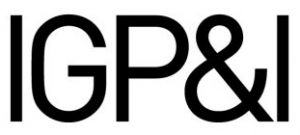From 1 January 2026, the use or storage of fire-extinguishing media containing perfluorooctane sulfonic acid (PFOS) will be prohibited under SOLAS and the High-Speed Craft (HSC) Codes. Timely preparatory actions should be undertaken to ensure full compliance.

Are your fire-fighting foams PFOS-free?
Published 22 October 2025
What is PFOS and why is it banned?
Perfluorooctane sulfonic acid is a persistent organic pollutant (POP) and a member of the broader class of perfluoroalkyl substances (PFAS), a group of synthetic chemicals known for their resistance to heat and their ability to repel oil and water. These properties have made PFAS widely used across numerous consumer and industrial applications, including fire-fighting foams. Owing to its unique physical and chemical properties, PFOS has historically been a key ingredient in aqueous film-forming foams (AFFF), which are used to extinguish flammable liquid (Class B) fires.
However, the same properties that makes PFOS effective in fire-fighting also contributes to significant environmental and health risks. PFOS does not break down easily in the environment and can contaminate soil, surface waters, groundwater, drinking water, and the food chain. It can also over time accumulate in living organisms and has been associated with serious health risks, including cancer, liver damage, cardiovascular disease, and infertility.
Given these risks, PFAS use is subject to extensive regulation, including the Stockholm Convention on POPs. The European Union, for example, enforces this convention through Regulation (EU) 2019/1021. Other countries may have implemented similar restrictions or bans. Although the use of PFOS in fire-fighting foams has declined due to growing awareness of its persistence, potential toxicity, and resulting regulatory actions, it may still be permitted in certain jurisdictions and carried onboard vessels. Furthermore, many PFOS-based fire-fighting foams have a long shelf life and may have been supplied to vessels prior to the enforcement of regulatory requirements.
The IMO decision
To protect individuals onboard ships from exposure to harmful substances and to minimise environmental impact, the IMO has adopted amendments to SOLAS Chapter II-2 and the 1994 and 2000 High-Speed Craft (HSC) Codes. These amendments prohibit the onboard use and storage of fire-extinguishing media containing PFOS in both fixed and portable fire-fighting systems and equipment, with the PFOS maximum allowable concentration limit set at 10 mg/kg (0.001% by weight).
The prohibition takes effect on 1 January 2026 and applies to both new and existing vessels. New vessels, those constructed on or after 1 January 2026, must comply upon delivery. Existing vessels must comply no later than the first survey conducted on or after 1 January 2026, with the term “first survey” interpreted in accordance with MSC.1/Circ.1290.
Be prepared!
Vessel owners, operators, and masters should take note of the amended regulations and begin preparations now to ensure timely compliance. Each vessel should implement a structured compliance plan that includes the following actions:
Review system inventories and safety certificates: Identify all fire-fighting systems and equipment that contain PFOS-based extinguishing media.
Assess older installations: For extinguishing media installed before 1 January 2026 for which proper documentation is unavailable, conduct sampling and testing of the media onboard in accordance with a recognized standard.
Remove or replace non-compliant media: Non-compliant extinguishing media should be removed or replaced. Thoroughly clean PFOS residues from tanks and systems, and deliver all PFOS-based media removed from the vessel to appropriate shore-based reception facilities.
Verify new media compliance: Ensure all replacement extinguishing media are suitably type-approved and certified in accordance with applicable IMO guidelines.
Secure evidence: Collect documentation - such as a manufacturer’s declaration or laboratory test report - confirming that all extinguishing media onboard are PFOS-free. Note that a simple statement from the manufacturer claiming the foam is PFOS-free may not be sufficient. A proper declaration should include details such as type, production period, batch number, and reference to the type approval/MED certificate for the media.
Confirm compliance with the flag administration: Compliance with the PFOS prohibition must be verified by the vessel’s flag administration or its recognized organization (RO). This can be achieved either by presenting the required manufacturer’s declarations or laboratory test reports to the attending surveyor during onboard inspections, or - if any changes or replacements of extinguishing media have been made - by submitting the relevant documentation for approval.
Note that PFOS may be recorded in a ship’s Inventory of Hazardous Materials (IHM) Part I, in accordance with the EU Ship Recycling Regulation (EU SRR), which implements the Hong Kong Convention (HKC). Any removal of PFOS-containing materials must be reflected in an updated IHM, ensuring compliance with both EU and IMO requirements.
Further guidance
Useful summaries of the forthcoming amendments and related compliance actions are also provided by leading classification societies, including the American Bureau of Shipping and Lloyd’s Register.
The EU Guidance for transitioning to Fluorine-Free Firefighting Foams can also be consulted. Although it does not specifically address the maritime sector, it provides valuable information on available fluorine-free alternatives, methodologies for detecting and mitigating PFAS residues, and recommendations for environmentally sound disposal practices.
Below is a list of the relevant regulatory documents:
MSC.532(107) - amending SOLAS Chapter II-2
MSC.536(107) - amending the 1994 HSC Code
MSC.537(107) - amending the 2000 HSC Code
MSC.1/Circ.1694 - providing unified interpretations of SOLAS regulations II-2/1.2.10 and II-2/10.11.2.2, as well as regulation 7.9.4 of the 1994 and 2000 HSC Codes
MSC.1/Circ.1290 - providing unified interpretation of the term “first survey” referred to in SOLAS regulatons
The Stockholm Convention - a global framework to eliminate or restrict dangerous persistent chemicals
Regulation (EU) 2019/1021 - regulating the production, placing on the market, use, and disposal of persistent organic pollutants in the European Union


